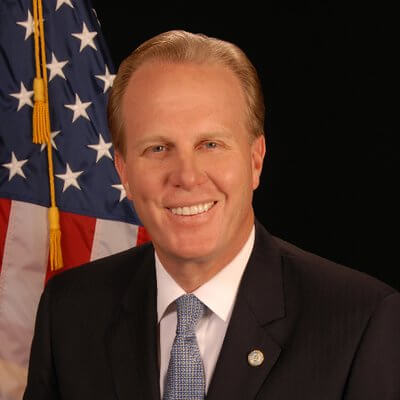Marking a big step toward implementing San Diego’s Climate Action Plan and goal of 100% renewable energy use citywide by 2035, Mayor Kevin L. Faulconer has announced the city will begin the process of forming a new joint powers authority (JPA) to take over the responsibility of purchasing power for its residents and, potentially, the San Diego region.
After three years of research and analysis, Faulconer has selected community choice aggregation (CCA) as the preferred pathway to reach the 100% renewable energy goal in its Climate Action Plan. According to the mayor, the new entity would create healthy competition to benefit San Diegans, lower energy costs by 5% or more for ratepayers, and help the city reach its renewable energy goal by 2035 – a decade ahead of the state’s goal.
According to the Sierra Club, CCA is a “game-changing alternative” to the investor-owned utility; it enables cities and counties to pool the electricity of residents and businesses to form a local, nonprofit power agency. By moving San Diego forward with a CCA program, residents and businesses will be empowered to decide where their electricity comes from and how the revenue from the program should be reinvested in the community, the Sierra Club explains.
“By listening to San Diegans, Mayor Faulconer is moving forward on utilizing an important tool many communities throughout California are taking advantage of already,” comments Luis Amezcua, Sierra Club senior campaign representative.
“I want San Diego to lead this region into a cleaner future,” Faulconer says. “This gives consumers a real choice, lowers energy costs for all San Diegans and keeps our city on the cutting edge of environmental protection. We are a city where our environment is central to our quality of life, and community choice will ensure we leave behind a better and cleaner San Diego than the one we inherited.”
Faulconer will now seek city council approval of a resolution of intent to establish a JPA that would implement and operate the CCA and allow other cities and government agencies in the San Diego region to join. A regional approach would allow for greater negotiating and buying power, as well as create efficiencies in operations and service, according to the mayor. Several other cities in the region are currently exploring the feasibility of a CCA and have expressed interest in joining a JPA.
San Diego conducted a CCA feasibility study in 2017 that included extensive analysis and third-party peer review. It concluded that the CCA program would be reliably solvent and financially feasible. The city then tasked MRW & Associates – a firm with more than 20 years of experience advising the city, other municipalities and utilities on energy issues – to develop a business plan for the CCA.
Earlier this month, the California Public Utilities Commission (CPUC) made a final ruling on exit fees – the charges ratepayers pay to switch from an investor-owned utility to a CCA – that allowed the city to determine the financial impacts of creating its own CCA. With this new information, the city now estimates that a CCA would have the ability to provide a cost reduction of 5% or more compared to the utility’s energy generation rates residents and businesses are currently paying.
The creation of a regionwide CCA is expected to be a multiyear process. After the formation of a JPA and appointment of its board of directors in 2019, the board would then hire an executive leadership team, including a CEO and chief financial officer, who would guide the JPA through the CCA implementation process. The JPA would then seek CPUC approval, with a goal of delivering power as soon as 2021.
“We have an opportunity to create a structure where all San Diegans will have a choice in how their energy is created and delivered,” says City Councilmember Georgette Gómez. “I look forward to the next steps and making sure that all San Diegans benefit from what we do here.”
The city has also released the Climate Action Plan’s third annual report, which documents a 21% reduction in greenhouse-gas emissions since 2010. The goal is to reduce emissions 50% by 2035.




